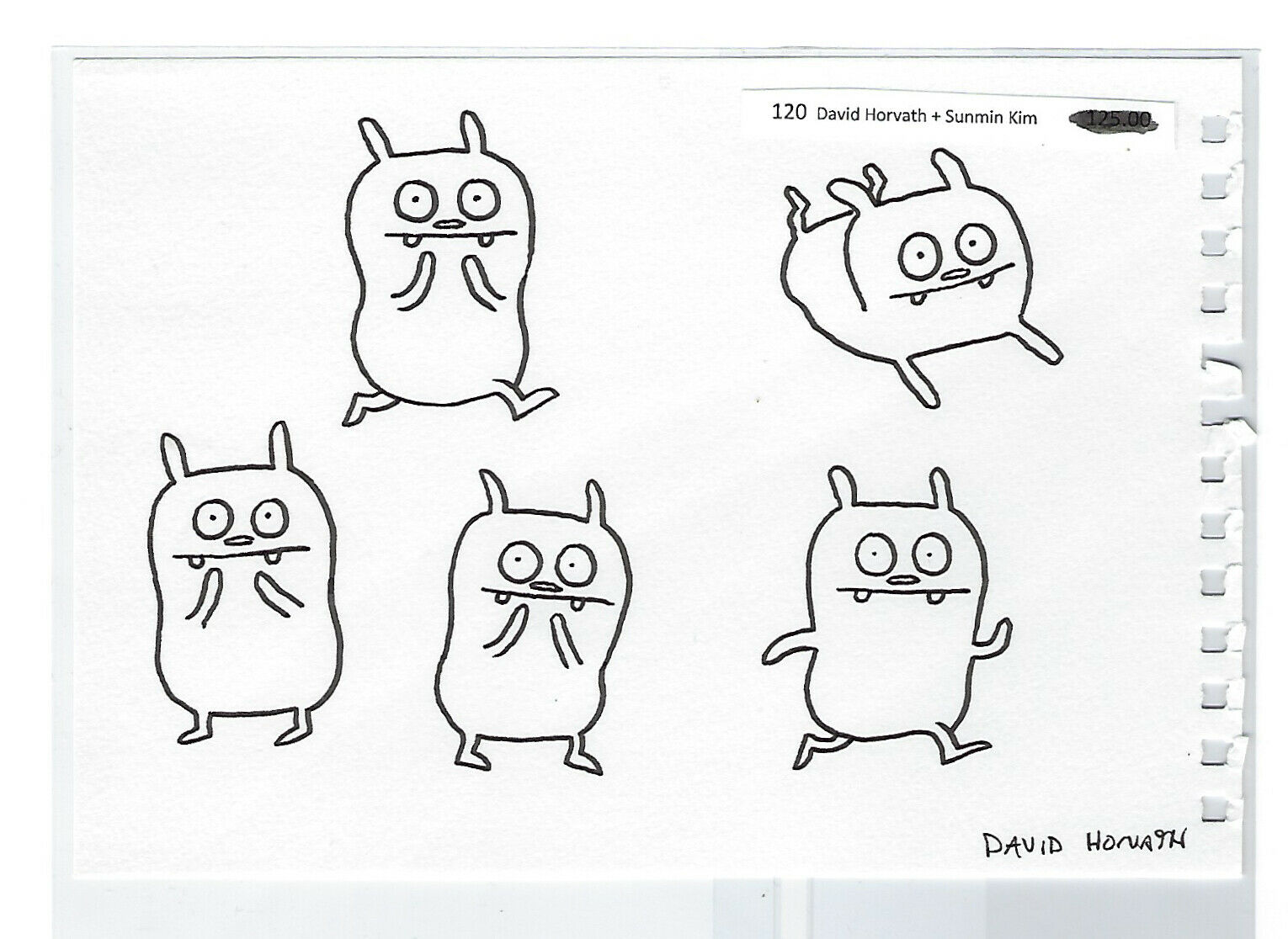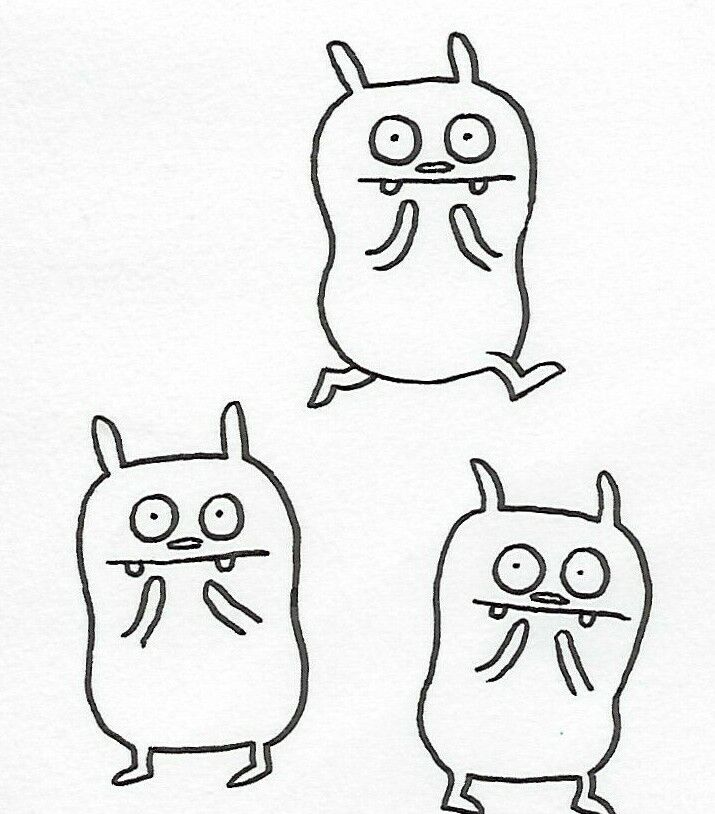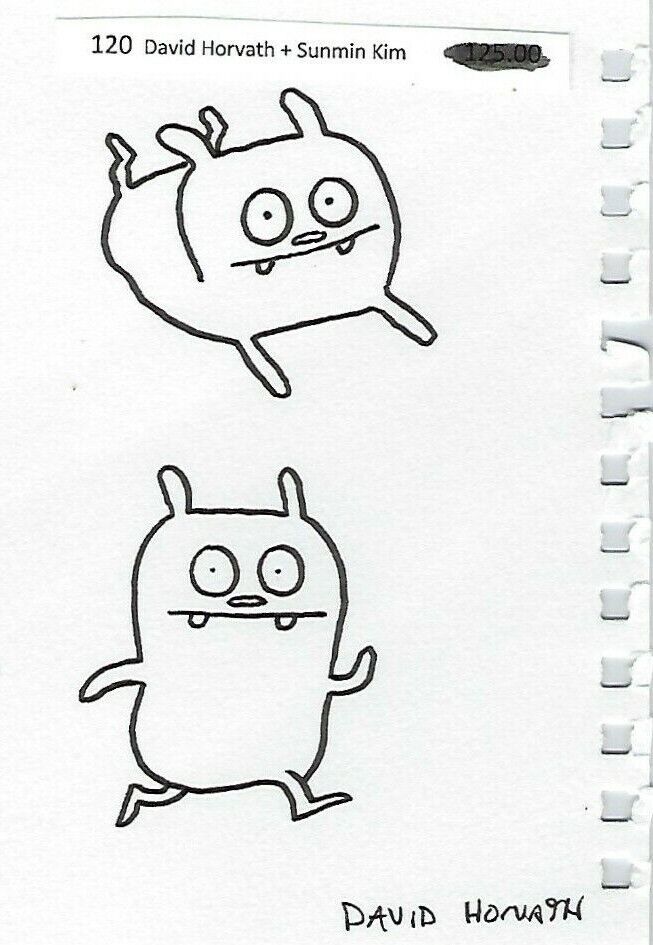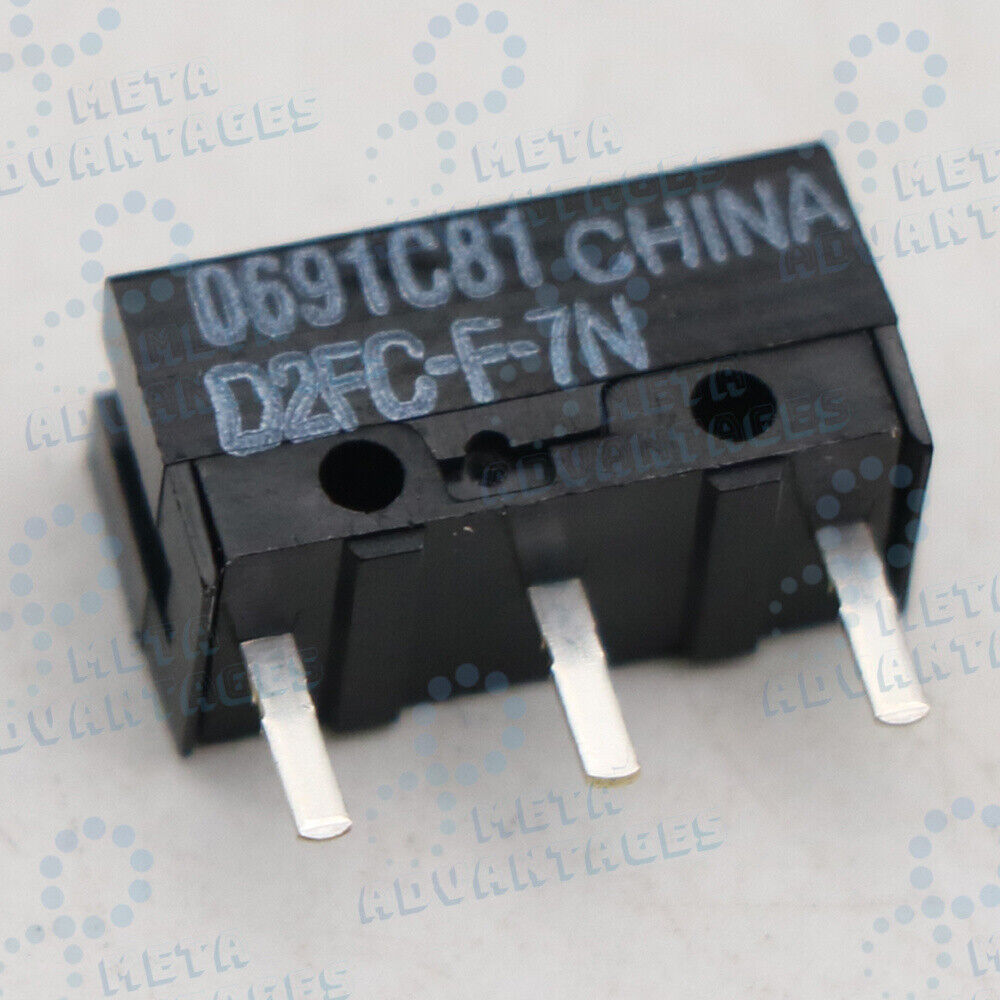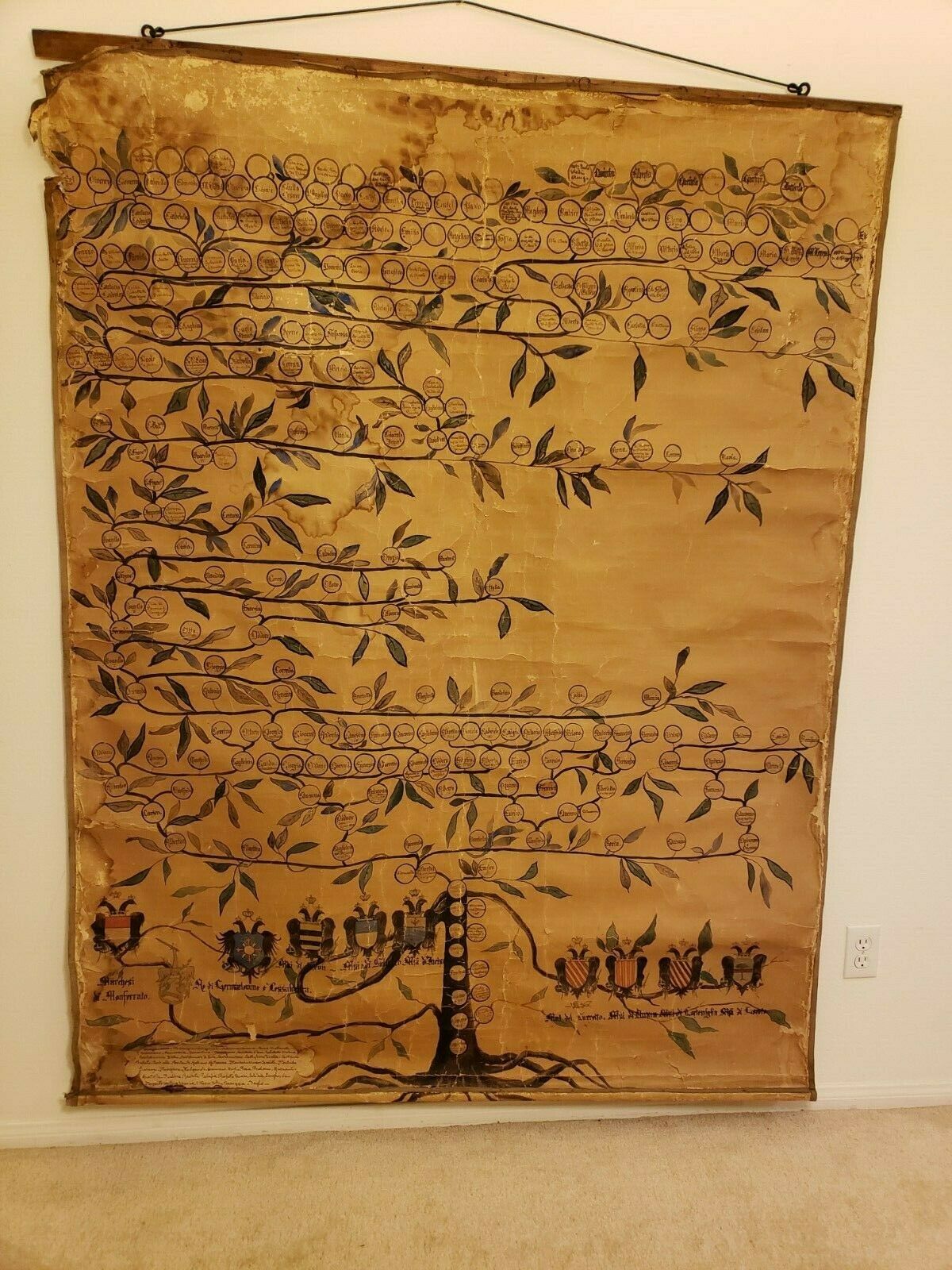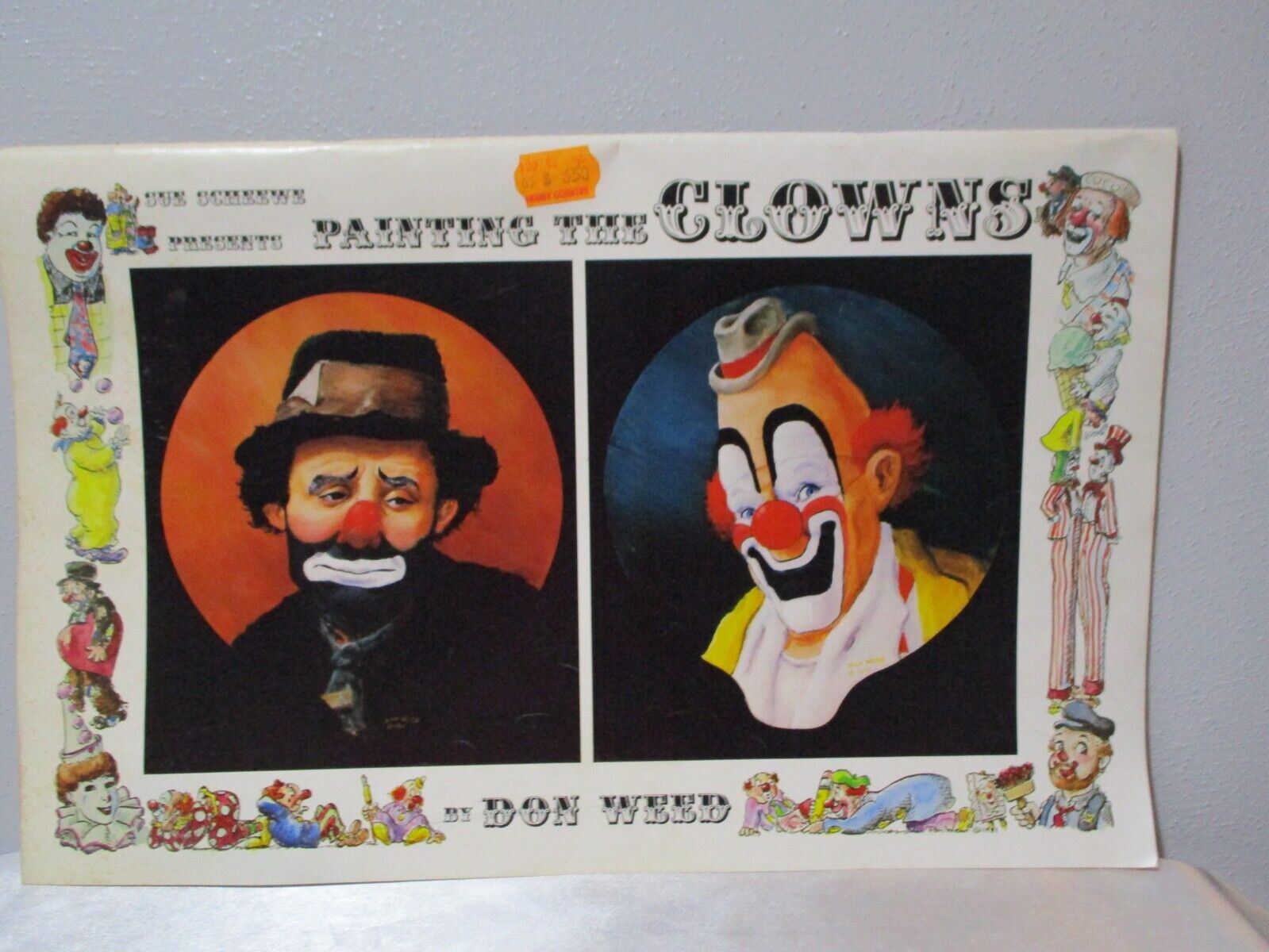-40%
Uglydoll Original drawing by it's creator David Horvath & Sun-min Kim Uglydolls
$ 92.4
- Description
- Size Guide
Description
An original drawing of an Uglydoll by the creator of Uglydolls David HorvathI n the early 2000s, David Horvath and Sun-Min Kim began peddling a line of weird stuffed creatures that were adorably homely, yet cute and vulnerable. Called Uglydolls, the snaggle-toothed plush monsters enjoyed a meteoric rise in popularity. By 2006, sales topped .5 million and, in 2008, the company sold its one-millionth doll. The strange characters come from a place Horvath and Kim dubbed “Uglyverse”—this is a universe where ugly means unique or special. Creatures include Wage, Jeero, Wedgehead, and Ice Bat, among others. Some have one eye, while others have three. Many have fangs. They all have distinctive personalities. Each Uglydoll comes with a mini-biography on its tag, describing its favorite foods, likes and dislikes, hobbies and so forth.
Eric Nakamura, owner of the L.A.based Asian pop-culture store Giant Robot, was the first retailer to carry the dolls. “Uglydolls are a constant seller,” he told Time magazine’s Nadia Mustafa. “They hit an emotional chord in people.” Nakamura believes they are popular in part because they force people to confront the eternal question of defining what ugly is and what it is not.
Horvath was born on May 28, 1971, in Summit, New Jersey, though he enjoyed a bi-coastal upbringing as the family moved frequently between New York City and Los Angeles. Horvath’s mother worked as a designer for Mattel. As a child, Horvath was always interested in the unique prototypes his mother brought home, but upon seeing the toys on the store shelves, he lost interest. Horvath thought that somewhere along the way, the toys seemed to lose their magic. Early on, Horvath knew he wanted to make toys but did not want to work for a large corporation.
Horvath also liked to draw. He decided to study illustration and entered New York City’s Parsons The New School for Design. In 1997, he met Kim, a fellow illustration student at Parsons. Horvath said he chased Kim around for a year before she would give him the time of day.
Kim was born on June 8, 1976, and grew up in Seoul, South Korea. She was always crafty and imaginative. As a child, she built dollhouses out of cardboard and clay. After graduating from Parsons in 2001, Horvath and Kim went their separate ways. In the aftermath of 9/11, Kim’s parents urged her to return to Korea. Heartbroken, Horvath was left alone in the United States. He bounced around for a while, working in Los Angeles at Toys International. He also worked as an illustrator, opening a studio in New York City.
Horvath thought he might find fame as an illustrator. He was inspired by Rodney Greenblat, the American fine artist who drew the characters for the 1990s PlayStation game “Parappa the Rapper.” Influenced by the game and its quirky characters—like the blue-skinned Katy Kat and Chop Chop, a martial arts master with a stinky green onion head—Horvath created his own cast of characters.
One of those characters was a blobbish creature with far-set eyes and triangular teeth extending from a somber, not-quite-grinning and not-quite-frowning mouth. Horvath inked the character, named Wage, onto the love letters he sent Kim. He took illustrations of the creature—and others like it—to toy companies and was told his characters had no viable market. Horvath felt devastated.
Kim used the illustrations on her love letters to create a foot-tall plush version of Horvath’s character. “I knew it would make David happy to see his character alive in the real world,” she told Time. “So for Christmas I sewed Wage into a doll.” Horvath showed the stuffed creation to Nakamura, who immediately ordered a batch for his store. Speaking to Time, Nakamura recalled his intrigue. “The prototype had great energy and didn’t ask too much in terms of analyzing it as a form or design concept. It was just easy to like.”
Horvath and Kim delivered 20 of the dolls to Nakamura. The dolls sold out in two days so Kim made more. Soon, they added Babo, Wage’s not-too-smart but incredibly loyal best friend. In Korean, babo means fool. Seeing a market for their creations, Horvath and Kim got down to business. At the time, Kim still lived in Korea. She did the sewing while Horvath created the tags and website and searched for boutiques to sell their quirky creatures. Over the course of 18 months, Kim sewed 1,500 dolls.
They also created new characters. Horvath made sketches, then sent them to Kim who brought them to life. In an interview with Jason Arber for the online magazine Pixelsurgeon, Horvath credited Kim for the dolls’ success. “If someone else were to take my illustrations and turn them into plush dolls, it wouldn’t come out the same way. Sun-Min took my drawings and turned them into the most amazing toys I have ever seen. In many cases Sun-Min would take bits from one drawing and pieces of another and put them all together to create an all new doll.”
Horvath and Kim reunited in 2003 when they exhibited their dolls at the International Toy Fair held in New York. The Uglydolls were a hit and the couple was blown away by the number of retailers who expressed interest. As the operation grew, the couple opened a warehouse in New Jersey. The dolls, which sell for about , are hand-sewn in Korea and assembled in China. Over the next few years they launched companion products, including T-shirts, key chains, vinyl figures, stationary, and journals.
Each year, the company expands its territory into new stores. Uglydolls are sold globally in 2,500 retail stores, including FAO Schwarz and Barneys. They can also be found in gift shops at the New York City Museum of Modern Art and the Musée des Arts Decoratifs in Paris.
Major corporations have offered to buy the company, but Horvath and Kim are not selling. In fact, they refuse to place Uglydolls in chain stores because they want to preserve their history. Horvath does not want them turned into a mass-produced, mass-marketed cash machine. Speaking to the National Post’s Neil Dunlop, Horvath put it this way: “They were not made on purpose so you would buy it, but as a genuine act of love that came without greed or wanting to get something from it.”
UglyDolls is an upcoming American computer-animated musical comedy film directed by Kelly Asbury, produced by Jane Hartwell and Robert Rodriguez, with the screenplay being written by Alison Peck, from a story by Rodriguez. It is based on the plush toys of the same name. The film features the voices of Kelly Clarkson, Nick Jonas, Janelle Monáe, Pitbull, Blake Shelton, Wanda Sykes, Gabriel Iglesias, Wang Leehom, Emma Roberts, Bebe Rexha, Charli XCX, and Lizzo. It is scheduled to be theatrically released in the United States on May 3, 2019, by STX Entertainment.
